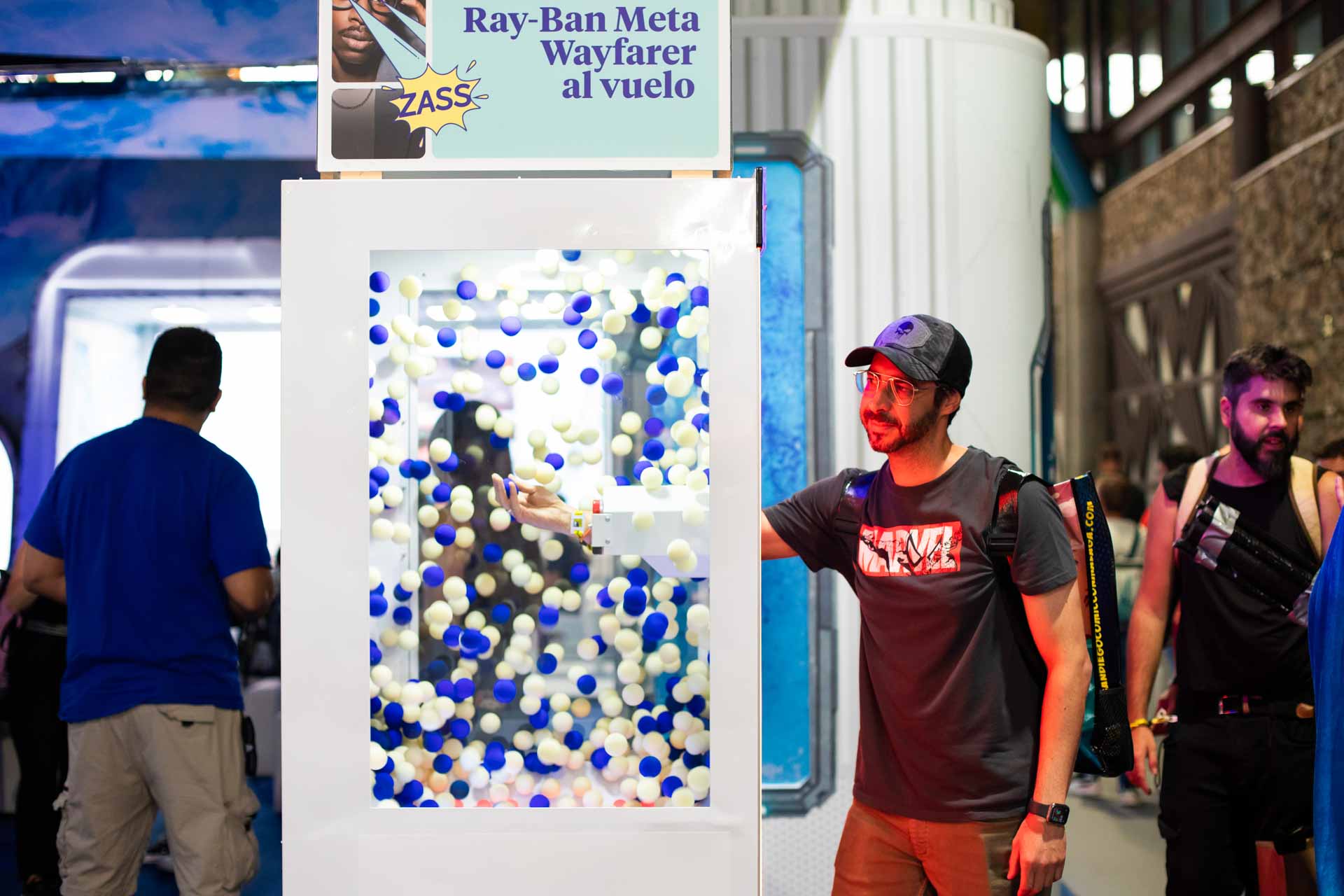In today’s environment, where every event represents a unique opportunity to connect with potential clients, stand design can no longer be limited to aesthetics or functionality. Interactive stands have evolved from being an option to becoming a strategic necessity. It’s not just about capturing attention—it’s about creating an experience that stays with visitors long after they leave the venue.
What truly makes a stand interactive?
An interactive stand is not simply one equipped with screens or technology. Interactivity goes far beyond digital. It’s about building an environment where visitors don’t just observe, but actively participate, engage, and connect with the brand.
This can be achieved through immersive games, personalized dynamics, augmented reality, or guided physical activities—all with a clear objective: forging an emotional connection with the customer. In these environments, experiential technology plays a key role. Touchscreens, motion sensors, and multisensory experiences must always align with the brand’s message. Virtual reality is increasingly common—not only for its visual appeal, but also for the advantages it brings to a stand when explaining complex processes or showcasing intangible products.
Interactivity as a memory-maker
One of the main goals of any stand at a trade show or conference is to remain in the visitor’s memory. The experience within that space must be unforgettable. To achieve this, the design and activities must align with the event’s purpose and the profile of the target audience. Personalization is crucial: addressing a technical audience at a specialized conference is not the same as engaging a general audience at a public fair.
Interaction also reinforces message retention. Neuromarketing studies have long shown that what we experience actively is remembered more vividly and for longer. For this reason, an interactive stand is a powerful tool not only to create an immediate impact, but also to extend the effect of the experience over time.
Hyper-personalization as an experience accelerator
It is well known that the more personal an experience feels, the stronger the connection it creates with the audience. Hyper-personalization has become one of the most important trends in experiential marketing in recent years.
The rise of AI has made this easier to implement. Predictive models and real-time data analysis have opened up new possibilities for delivering tailor-made experiences aligned with individual preferences and interests. Take, for example, the case of Nike ID. The goal was not only to personalize sneakers, but also to understand the emotions users wanted to feel when wearing them. Each response—where would you walk in them, with whom, how would you feel—translated into a unique design.
Hyperpersonalization, combined with interactive activities, results in an audience that is engaged, attentive, and willing to connect more deeply with the brand. Importantly, it’s not about hyper-segmentation, but about crafting meaningful, memorable experiences.
Conclusion
In today’s events, where every detail matters in standing out from the competition, interactive stands have become an essential tool for creating memorable experiences. Interactivity doesn’t just attract visitors—it actively involves them, strengthening their emotional connection with the brand.
Ultimately, a well-designed interactive stand is not just a space within a trade show or conference—it is an experience that generates lasting memories, builds stronger client relationships, and leaves an enduring impression far beyond the event itself.






